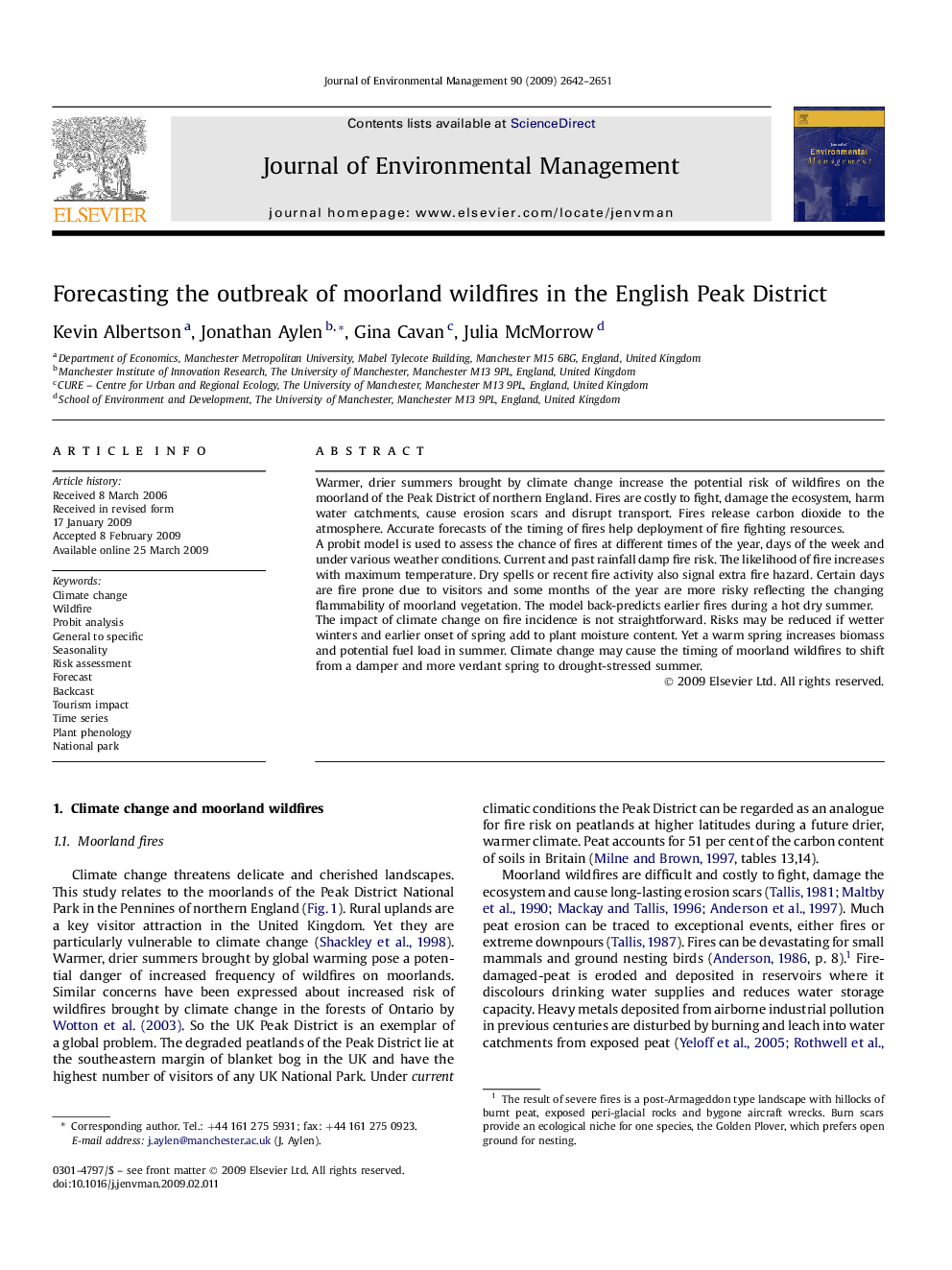| Article ID | Journal | Published Year | Pages | File Type |
|---|---|---|---|---|
| 1057761 | Journal of Environmental Management | 2009 | 10 Pages |
Warmer, drier summers brought by climate change increase the potential risk of wildfires on the moorland of the Peak District of northern England. Fires are costly to fight, damage the ecosystem, harm water catchments, cause erosion scars and disrupt transport. Fires release carbon dioxide to the atmosphere. Accurate forecasts of the timing of fires help deployment of fire fighting resources.A probit model is used to assess the chance of fires at different times of the year, days of the week and under various weather conditions. Current and past rainfall damp fire risk. The likelihood of fire increases with maximum temperature. Dry spells or recent fire activity also signal extra fire hazard. Certain days are fire prone due to visitors and some months of the year are more risky reflecting the changing flammability of moorland vegetation. The model back-predicts earlier fires during a hot dry summer.The impact of climate change on fire incidence is not straightforward. Risks may be reduced if wetter winters and earlier onset of spring add to plant moisture content. Yet a warm spring increases biomass and potential fuel load in summer. Climate change may cause the timing of moorland wildfires to shift from a damper and more verdant spring to drought-stressed summer.
